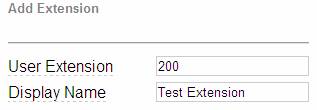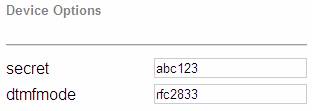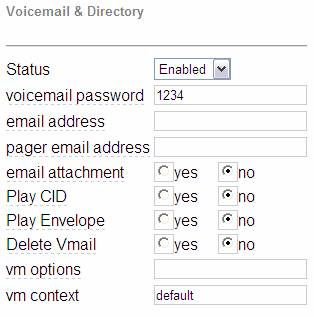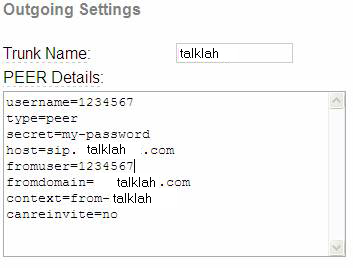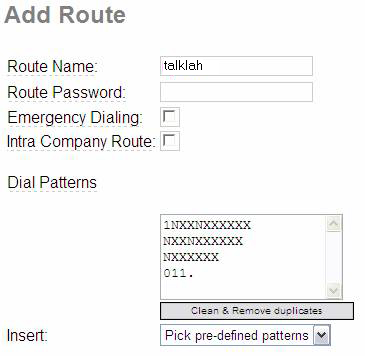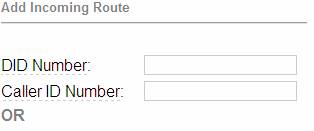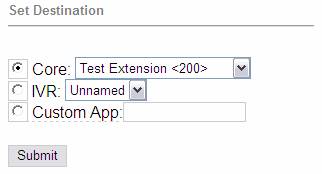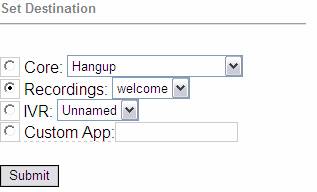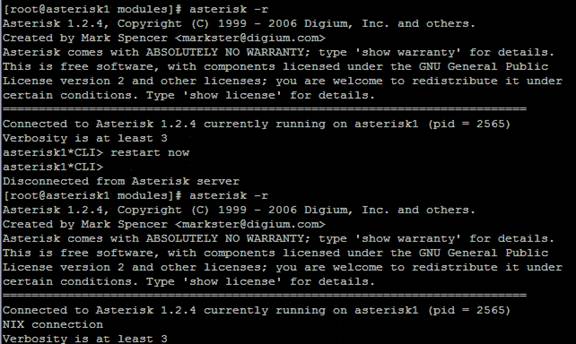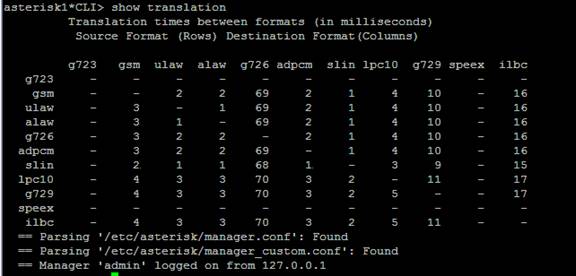|
Device Configuration Guides
Trixbox v 2.0 with TalkLah Trunk
The purpose of this document is to provide a step by step installation guide of Trixbox using TalkLah as the VoIP provider. You can always visit http://asteriskathome.sourceforge.net/ in order to learn about all the features provided as well as additional information you may need. Just follow this installation guide step by step and you will be able to install and configure your Trixbox with our TalkLah service in no time!
Who can use Trixbox? Trixbox can be configured in different ways according to your needs.
What is Asterisk? Asterisk is an open source PBX that allows regular and sip phones to communicate with each other. Like any PBX system, Asterisk has features such as: Voicemail, conferencing, call distribution.
What is Trixbox? Trixbox is an iso image of a pre-configured Asterisk server which makes installation and deployment easier. Trixbox contains a full version of Asterisk and other pre-configured applications considered add-ons. After installing Trixbox , you will have a fully functional PBX which can be customized according to your needs.
1 Pre-Installation Tasks 1.1 Meet the minimum or recommended hardware requirements The faster the system you use to run Asterisk the more simultaneous calls it will be able to handle. A 500MHz PIII with 128 Megs of RAM should easily meet the needs of the average home use. 2Gb Hard Disk minimum. Keep in mind that these are the minimum requirements. If you are planning to use Asterisk in an office environment where voicemail and call monitoring will be used we suggest you use a PIV CPU, with at least 512 MB of RAM and at least a 40 GB hard drive.
1.2 Download the ISO image Download the latest .ISO from http://sourceforge.net/project/showfiles.php?group_id=123387&package_id=192286 http://trial.alcohol-soft.com/en/index.php
1.3 Set up your router/firewall so A@H can communicate with TalkLah via SIP through NAT For Trixbox to communicate successfully with TalkLah using SIP through a NAT, you have to make sure your router/firewall forwards the following ports to your LAN/Private IP address assigned to the Trixbox server. Be sure the LAN/Private address is statically assigned to the Trixbox server and it is not assigned dynamically via DHCP. In your firewall’s configuration forward the following ports to your Trixbox’s IP address:
Note.- We do not support IAX or IAX2. We included them in the table as a reference.
1.4 Setup for changing (dynamic) Internet IP address Most ISP do not provide a “private static IP address” which would be recommended to run Trixbox. The average ISP provides Dynamic (DHCP) addresses which make a little more difficult for users to run Trixbox. The work-around for this problem is “Dynamic DNS”.
What is Dynamic DNS? Dynamic DNS allows an internet domain name to be assigned to a dynamic IP address. This solution can be used for servers connected to ADSL or a dial up connection where the address is changed periodically. Some dynamic DNS providers provide a piece of software that can be installed in the server. This software works in the background and it tracks any change in the IP address and sends it to their database. This way the domain name will be always updated with the correct IP address as soon as it changes. There are some routers on the market that have this feature built in which makes it unnecessary to install any software on the server. All you have to do is get an account with the provider and configure it in the router.
How do I use Dynamic DNS with Trixbox? You need to edit the sip_nat.conf file. Inside of FREEPBX, click Maintenance ----> Config Edit ----> sip_nat.conf. Inside of sip_nat.conf add the following and click "Update":
To determine your local NETWORK address (NOT the IP address!!) you have to know a little about your subnet mask (255.255.255.0 numbers).
2 Installation 2.1 Installing from an ISO Insert the CD you created using the ISO image and make sure that your Bios is configured to boot from a CD-ROM or DVD-ROM. Boot the computer and press ENTER when prompted. This will erase all the information on the hard drive and install your Trixbox. Once your Trixbox server is installed, it will have all the applications and the operating system itself with default passwords; that is why it is recommended that you unplug your server from the network in order to avoid any hacker attack. After Linux has loaded, the CD will eject. Remove the CD from the system and wait for the system to reboot. Booting the system might take a while, depending on the speed of your computer. Once this process is complete, log in to your new Trixbox system with the user = root and the password you created during the installation.
3 Securing your Trixbox server 3.1 Configure your Trixbox server with a static IP address In order to change the default passwords, we need to assign your Trixbox a static IP address. At the CentOS command line type:
3.2 Changing your default FOP password The default password for the Flash Operator Panel is: Note that 0 is a “zero”
3.3 Changing your default meetme password To change the default type the following into the CentOS command prompt. passwd-meetme It will ask you for your new password twice.
3.4 Changing your default System Mail password To change the default password type the following into the CentOS command prompt.
3.5 Changing your default Sugar CRM Password Access SugarCRM from your web page by typing HTTP://YourAsteriskIPaddressHere into your web browser. The default login and password are:
3.6 Updating patches to CentOS It is recommended that you install CentOP patches. From the CentOS command line, run the following command:
4 Using FREEPBX to configure your Trixbox server 4.1 What is FreePBX? Asterisk Management Portal makes Asterisk configuration easier by providing a graphical method (through a web browser). FREEPBX allow you con configure the textual configuration files that Asterisk needs to function. FREEPBX can configure the following in Asterisk: For TalkLah configuration purposes we will need to enable some of the modules in FreePBX
4.2 Configuring an extension
5. From the device drop down menu select “Generic SIP device” and click submit.
Example 1. Create extension 200 and type in a password for registration like "abc123". Then enter the name of the person using this extension. 2. Select enable, and enter a voicemail password. Use something you can type on a phone keypad like '1234'. Enter an e-mail address where you would like your voice messages sent and click add extension. Then click on the red apply bar at the top of the screen. 3. Configure your extension in a soft phone for testing. Xlite is the best choice for this test. Remember to use your extension number and password in Xlite. Use your Trixbox private IP address as the sip proxy. 4a) Make a call from your phone. Try *43 this is an echo test. NOTE: If the extension you are configuring will connect remotely (outside the Local Area Network) you will need to change the NAT option to yes. Just create the extension, submit the changes and go back to edit it. You will see NAT=never; change it to NAT=yes Every time you make a configuration change and click “Submit” a RED bar will appear at the top of the screen “Apply Configuration Changes”. This bar will reload the . conf files. Click this bar in order for the changes to take effect.
4.3 Configuring trunk for inbound and outbound calls
4.4 Configuring Outbound Routing You will need to allow calls from your phones to go out on a specific trunk. When having more than one trunk, you will need to setup dialing rules (dialing patterns) in order to specify which calls should go out on which trunk.
Using FREEPBX
4.5 Configuring Inbound Routes Configuring inbound routes will allow calls from TalkLah go someplace in your PBX. Using FREEPBX
4.6 System Recordings System Recording will allow you to record your own voice prompts or create one putting several built-in voice prompt files together to create the one you need. For this example will use the “Built-in Recordings” option to create an IVR that will play “Welcome, please enter the extension number. Thank you for calling.” Using FreePBX
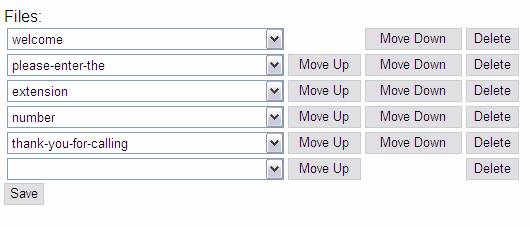 6. After saving all files your recording will be created with the name of the first file selected. In this case, “welcome.”
All incoming calls will be routed to the “welcome” system recording allowing callers to select the desired extension.
5 Other Tasks Up to this point we have performed a basic installation and configuration of Trixbox.
5.1 Install low bandwidth codecs You can find the specific codecs for your type of CPU in the following link: http://kvin.lv/pub/Linux/Asterisk/built-for-asterisk-1.2/ DISCLAIMER:You might have to pay royalty fees to the G.729/723 patent holders for using their algorithm. To install the codec move .so file into /usr/lib/asterisk/modules directory in your Asterisk server. It is very important that you choose the codec according to the CPU your server has. If you choose the wrong type, Asterisk will not load and will give you an error message. All you have to do is remove the file and restart your server. Here is the command to remove files in CentOS (Linux): rm filename (replace “filename” with the name of the codec file) Once you determine the right file for your server, enter the following commands in your server’s prompt and press enter
Assuming that the file I need is codec_g729-gcc-pentium4-no-sse.so Enter the command:
In order to determine if we downloaded the correct file, run the following commands: asterisk –r [press enter]
If the file was loaded correctly, you will see the translations under G729.
Perform the same operation to install the G723 codec.
5.2 Restrict the TalkLah trunk to the above mentioned codecs.
Using FreePBX
5.3 Restrict Asterisk to use low bandwidth codecs for remote extensions. Use a pc on your network that has a web browser and connect to your Trixbox box using HTTP://PutYourTrixboxIpaddressHere.
|
||||||||||||||||||||||||||||||||||||||||
|
Our Service includes Internet phones with free Internet calling and unlimited US and Canada plans. We offer prepaid phone service and International DID numbers using our voice over IP system and an analog telephone adaptor (ATA). The solutions are designed for home phone service, business phone service, call shops, telemarketing firms and cyber cafes. TalkLah is proud to support Internet telephony equipment (IP Phones) including Sipura 2000, Sipura 3000, Cisco 186, Linksys PAP2 and other SIP phone adaptors. We also support Asterisk PBX, Trixbox and offer turn-key VoIP Reseller business opportunities to let entrepreneurs and businesses resell voice over Internet (VoIP) under their brand name.
|


